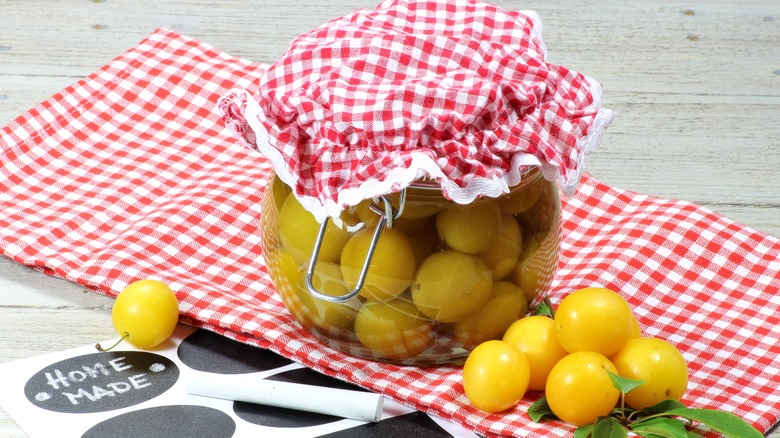A Canning Etiquette Rule That Often Goes Overlooked
Like with many things, there's a set of rules, or etiquette, that should be adhered to with home canned foods, especially when you've received it as a gift. The problem with home canning etiquette, though, is that it's not as widely known as other forms of accepted rules, such as not chewing with your mouth open and not putting elbows on the dinner table. The reason canning etiquette can be more elusive is because home canning fell out of popularity for a few decades, and has only recently made more of a comeback.
As noted by Healthy Canning, home canning skipped a generation, as most Baby Boomers didn't can — Generations X and Y make up the bulk of today's home canners. The gap in a generation of canners helps to understand how canning etiquette may have also fallen out of fashion. In particular, the fact that canning protocol stems around one important component.
Jars: To return or not return
To return or not return — that can be the unspoken question when it comes to jars, per The Kitchn. As noted by Shockingly Delicious, canning jars are often looked at as an investment by home canners. Since they're made of glass, they're reusable, and shouldn't be thrown away when empty. While some people who make and give away home canned food don't expect their jars back, it's always a good idea to ask them when you receiving a jar of home-canned goods.
Still, even if a home canner asks for their jar back, there's a chance someone may forget. That's where a label can come in handy. According to Canning Crafts, home canners can make their own labels that ask the receivers to return the jar when empty. The label can be intricate or simple, and range from hand-written labels to decorative ones designed by the user or found online. No matter the style, using a label is a great way to ensure canning jar etiquette is followed.

